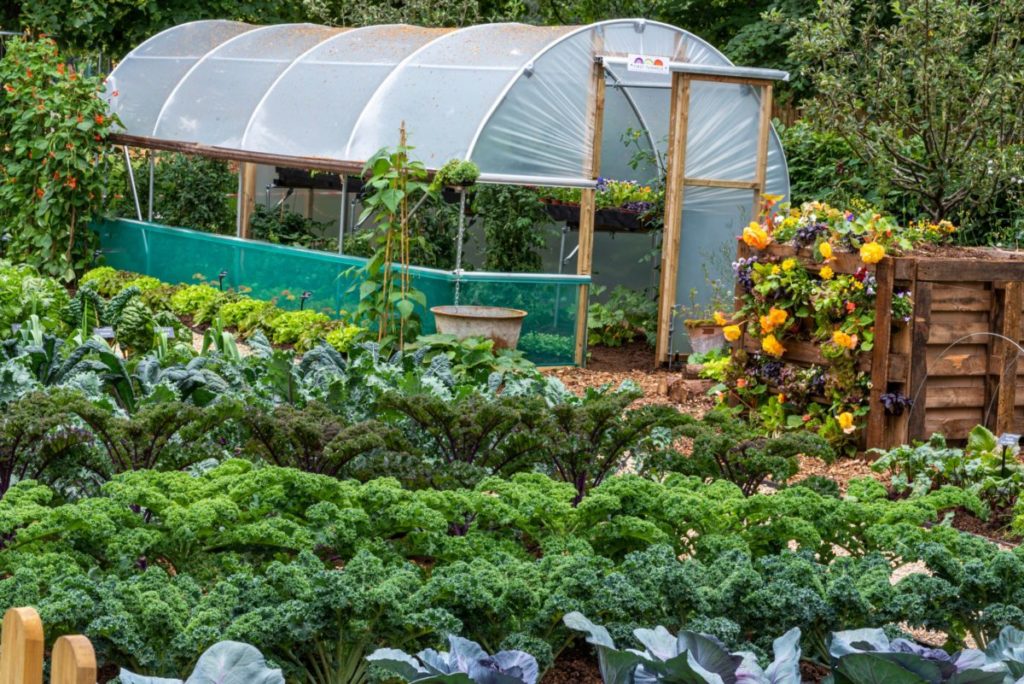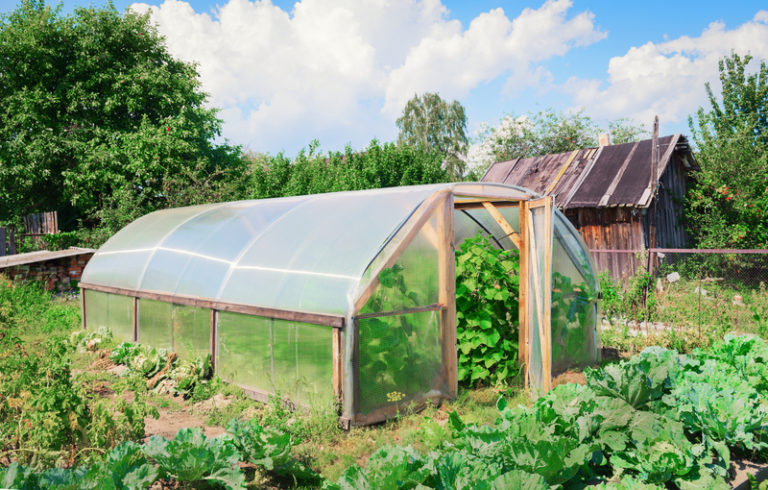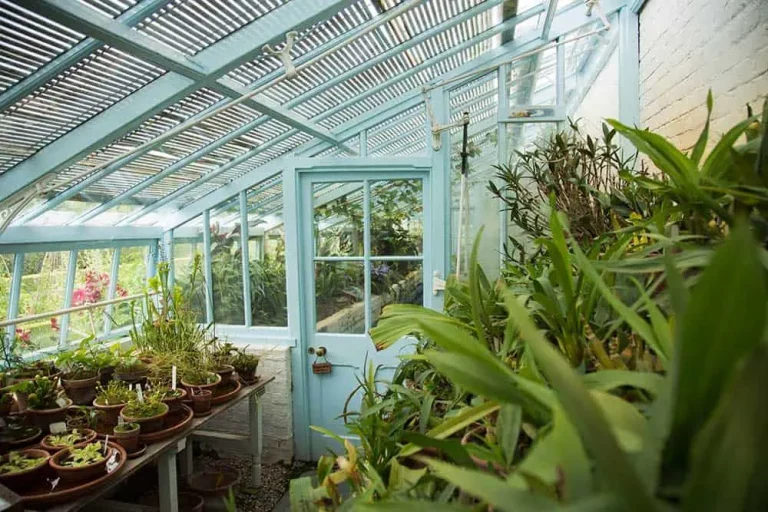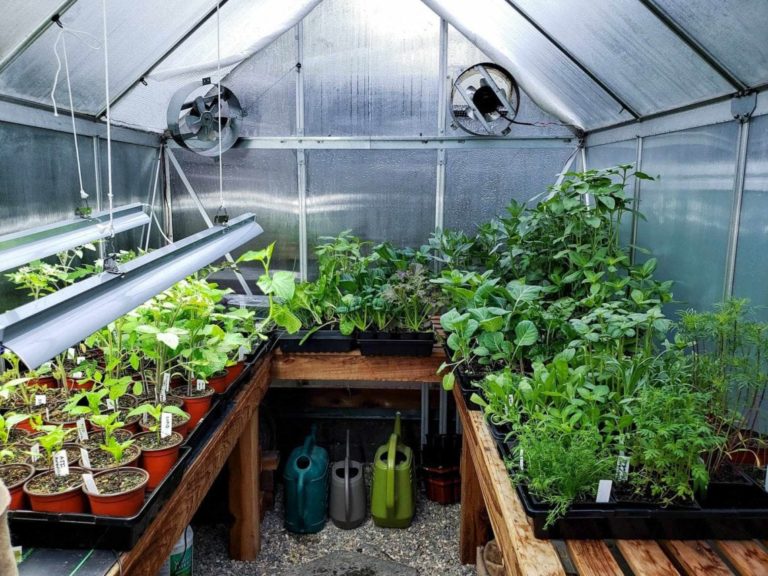Growing your own food year-round can be a rewarding and cost-effective way to provide fresh produce for you and your family.
One effective method for doing so is by using a greenhouse, which allows you to extend the growing season beyond the typical spring and summer months.
In this beginner’s guide, we will cover everything you need to know to start growing your own food year-round with a greenhouse, from choosing the right location to harvesting your crops.
With these tips and tricks, you can enjoy fresh produce all year long, no matter what the weather is like outside!
Choose the Right Location
Select a sunny location for your greenhouse, taking into account the amount of sunlight and wind direction. The location should provide maximum sun exposure and protect your plants from strong winds.
A sunny location will provide your plants with the optimal amount of light to support growth and development, while protecting them from strong winds is essential to prevent damage and ensure a stable environment.
To begin with, look for a location that receives direct sunlight for at least 6 hours a day.
This will ensure that your plants have access to the necessary light for photosynthesis and growth.
Consider the angle of the sun’s rays and choose a location that receives sunlight from the east or west, as these directions will provide a more consistent amount of light throughout the day.
Furthermore, take into account the wind direction in your area.
Strong winds can damage your greenhouse and cause stress to your plants, so it’s essential to locate your greenhouse in a area that is protected from windy conditions.
Consider building your greenhouse near a natural barrier such as a hill, a row of trees, or a building, which can act as a shield against wind and provide a more stable environment for your plants.
By taking into account the amount of sunlight and wind direction, you can ensure that your greenhouse is located in an ideal spot that meets the specific needs of your plants.
This will help you create a thriving and productive greenhouse environment that will reward you with bountiful harvests and healthy, happy plants.
Choose the Right Greenhouse
Consider the size of your garden, the type of plants you want to grow, and your budget when selecting a greenhouse. You can choose from a variety of materials, including glass, polyethylene, or polycarbonate.
Choosing the right greenhouse is a important decision for any gardening enthusiast.
The size of your garden, the type of plants you want to grow, and your budget are all important factors to consider when selecting a greenhouse.
For example, if you have a small garden, a compact greenhouse with a shorter length and width may be more suitable.
On the other hand, if you want to grow larger plants or more of them, a larger greenhouse with more space may be needed.
The material of the greenhouse is also important, as it can affect the amount of light and heat that enters the structure.
Glass greenhouses are a popular choice, but they can be more expensive and may require more maintenance.
Polyethylene and polycarbonate greenhouses are more affordable options and require less maintenance, but they may not provide as much light and heat as glass greenhouses.
Ultimately, the right greenhouse will depend on your specific needs and preferences, so it’s important to do your research and choose the one that best fits your gardening goals.
Build or Purchase a Frame
Build or purchase a sturdy frame for your greenhouse. You can use wood, metal, or PVC piping for the frame, depending on your preference and budget.
If you’re looking to build or purchase a frame for your greenhouse, there are several options to consider.
Wood, metal, and PVC piping are all viable materials to use, each with their own advantages and disadvantages.
Wooden frames are a classic choice for greenhouses, offering natural beauty and durability.
However, they can be more expensive and require more maintenance over time.
Metal frames, on the other hand, are often less expensive and more durable, but may not offer the same aesthetic appeal.
PVC piping is a modern and versatile option, with the added benefit of being lightweight and easy to transport.
Regardless of which material you choose, it’s essential to ensure that the frame is sturdy and can withstand the weight and pressure of the greenhouse covering and any potential weather events.
The frame should also be designed to allow for adequate ventilation and light penetration.
Before making a decision, it’s important to consider your budget, preferred aesthetic, and the specific needs of your greenhouse project.
With proper planning and execution, a sturdy frame can provide a strong foundation for your greenhouse, ensuring a thriving environment for your plants to grow and flourish.
Add Plastic or Glass Covering
Cover your frame with plastic or glass to provide insulation and protect your plants from extreme weather conditions. You can choose from a variety of plastic or glass materials, depending on your budget and preferences.
When it comes to protecting your plants from extreme weather conditions, adding a plastic or glass covering to your frame is an essential step.
Not only does this provide insulation to keep your plants warm during the colder months and cool during the hotter months, but it also shields them from harsh winds, rain, and other elements that could potentially damage or kill them.
There are a variety of plastic and glass materials available on the market, so you can choose the one that best fits your budget and preferences.
Plastic covers are generally more affordable and can be easily cleaned with soap and water, while glass covers are more durable and can withstand extreme temperatures.
However, glass covers are typically more expensive and may require special cleaning solutions.
Regardless of the material you choose, it’s important to ensure that it fits snugly over your frame and is securely fastened to prevent it from coming loose or blowing away in the wind.
You may also want to consider the thickness of the material, as thicker materials will provide more insulation and protection for your plants.
Overall, adding a plastic or glass covering to your frame is an inexpensive and effective way to keep your plants healthy and thriving.
Install Ventilation and Irrigation Systems
Install ventilation and irrigation systems to ensure proper air circulation and watering for your plants. Automatic vents and drip irrigation systems can help save time and resources.
Installing ventilation and irrigation systems can have a significant impact on the health and productivity of your plants.
Proper air circulation is essential for preventing diseases and pests, while adequate watering ensures that your plants receive the necessary moisture to thrive.
Automatic vents and drip irrigation systems can help you save time and resources by automatically regulating the amount of air and water your plants receive.
These systems can help you optimize your water usage, ensuring that your plants are receiving the exact amount of water they need, without any waste.
By investing in ventilation and irrigation systems, you can ensure that your plants are receiving the optimal environment for growth, which can lead to increased yields and a healthier garden overall.
Provide Adequate Lighting
Install supplemental lighting, such as LED grow lights, to provide adequate lighting for your plants, especially during the winter months. This can include both top and bottom lighting.
Providing adequate lighting is important for the health and well-being of your indoor plants, especially during the winter months when natural light is scarce.
LED grow lights can be installed to provide supplemental lighting, which can include both top and bottom lighting.
Top lighting involves placing the LED grow light above the plants, while bottom lighting involves placing the light below the plants.
Both methods can be effective, depending on the specific needs of your plants.
For example, if you have plants that require more intense light, such as succulents or cacti, top lighting may be a better option.
However, if you have plants that prefer more diffused light, such as ferns or African violets, bottom lighting may be a better choice.
Regardless of the lighting method you choose, it’s essential to ensure that the lights are positioned at the correct distance and angle to provide adequate light for your plants.
Proper lighting can make all the difference in promoting healthy growth, flowering, and fruiting, so it’s worth the investment to provide your plants with the light they need.
Maintain Proper Temperature and Humidity
Monitor and control the temperature and humidity levels inside your greenhouse to ensure optimal growing conditions for your plants. A temperature range of 65-75°F (18-24°C) is ideal for most vegetables and fruits.
Maintaining proper temperature and humidity levels inside your greenhouse is important for optimal growing conditions.
A temperature range of 65-75°F (18-24°C) is ideal for most vegetables and fruits, as this range allows for optimal photosynthesis and growth.
If the temperature is too high or too low, it can cause stress to your plants, leading to stunted growth, reduced yields, and even plant death.
Humidity levels should be maintained between 40-60%, as extreme humidity levels can lead to fungal diseases and other issues.
To ensure proper temperature and humidity control, invest in a reliable greenhouse thermometer and hygrometer, and consider using ventilation and irrigation systems to regulate the environment.
By maintaining proper temperature and humidity levels, you can create an optimal growing environment for your plants and ensure healthy growth and high yields.
Start Small and Gradually Expand
Start with a small greenhouse and gradually expand as you gain experience and confidence. This will help you avoid common mistakes and save resources. Begin with a few plants, such as tomatoes, peppers, and cucumbers, and gradually add more as you become more comfortable with greenhouse growing.
Starting small and gradually expanding your greenhouse operation is a wise strategy for several reasons.
It allows you to gain hands-on experience and confidence in your ability to grow plants in a controlled environment without committing to a large, expensive setup right from the start.
This is essential because greenhouse growing requires careful management of temperature, humidity, and light levels, among other factors, and small mistakes can quickly become big problems.
By starting small, you can learn the ropes without breaking the bank or wasting resources.
Another benefit of starting small is that it enables you to test the waters, so to speak, and see which plants thrive in your specific climate and growing conditions.
For example, you might begin with tomatoes, peppers, and cucumbers, which are popular and relatively easy to grow, and then gradually add more variety as you become more comfortable with the process.
This approach will not only help you avoid common mistakes but also allow you to fine-tune your growing techniques to optimize yields and profitability.
In short, starting small and gradually expanding is a wise move for anyone looking to establish a successful greenhouse operation.
Want More? Dive Deeper Here!
Hey there! If you’re the type who loves going down the rabbit hole of information (like we do), you’re in the right spot. We’ve pulled together some cool reads and resources that dive a bit deeper into the stuff we chat about on our site. Whether you’re just killing time or super into the topic, these picks might just be what you’re looking for. Happy reading!






